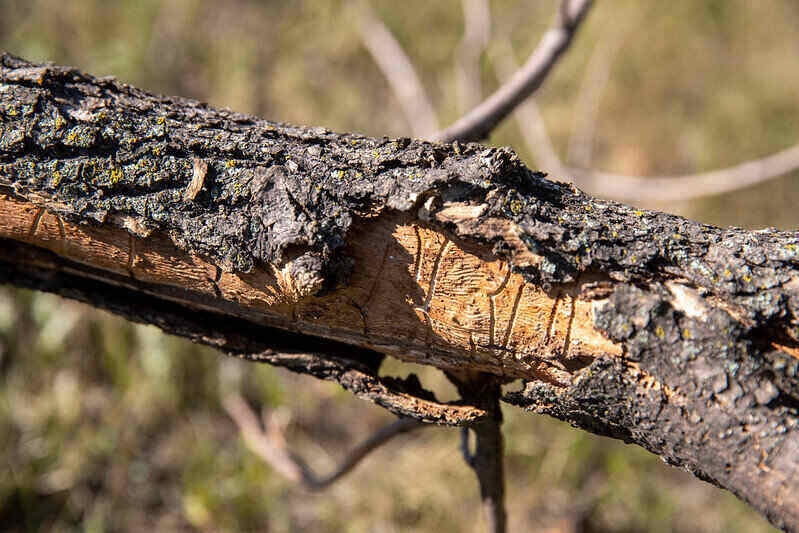
The emerald ash borer may get the most headlines, but a host of diseases and pests can infect, wither, and kill your favorite ash trees. Knowing the symptoms of ash tree diseases can help you spot any problems and know how to treat them.
The goal of this article is to help you identify the disease before that fungus or pathogen kills your ash tree or leaves you no option but to cut it down. As a bonus, we’ll talk about three common pests that attack ash trees. When you’re finished reading, you’ll know the difference between the emerald ash borer and the banded ash borer.
Here are seven of the most common ash tree diseases (and three bonus ash tree pests). For each, we have highlighted the symptoms, causes, treatments, and risks of what may be infesting your ash tree:
Ash Tree Diseases
1. Ash Anthracnose Disease
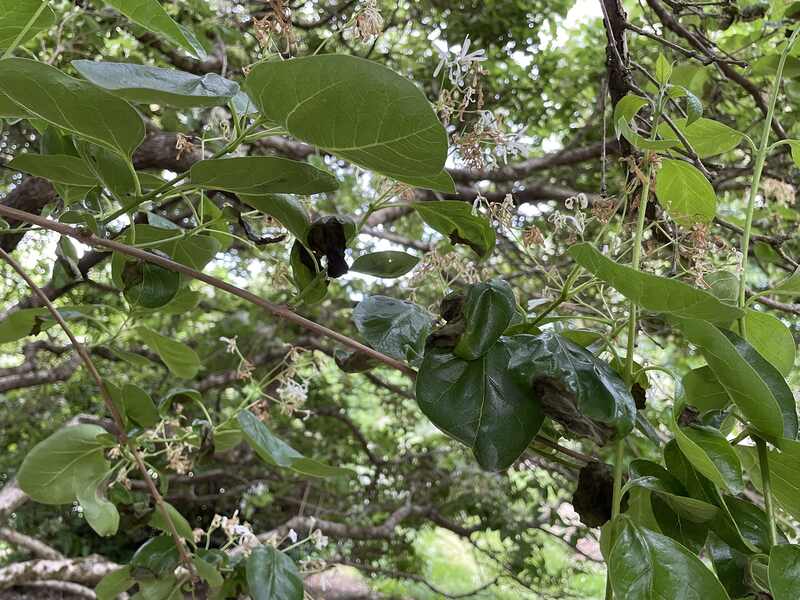
Trees affected: Ash anthracnose disease is especially common in green ash. Anthracnose is specific to the kind of tree it infects, so anthracnose of oak will not affect ash (Fraxinus spp.), and anthracnose of ash will not spread to any other type of tree besides ash. However, the symptoms and the management methods are the same for most anthracnose diseases of trees.
Symptoms:
- Leaves may develop large black or tan patches that cause the leaves to deform in those areas.
- Small purple-to-brown spots may also appear in the middle of the leaves.
- In severe cases, complete defoliation may occur.
- Symptoms typically first occur on the lower and inner canopy leaves.
Causes: The fungus that causes ash anthracnose, Gnomoniella fraxini, overwinters in the upper parts of trees in seed samara or on twig cankers. Spores form in tiny fruiting bodies and begin infection around the time the ash leaves are budding out. Spores are spread by wind and splashing rains to infect buds, twigs, and newly emerging leaves.
Season: Infection occurs in the spring and prefers wet, cool weather.
Treatment: Prune affected branches. In autumn, dispose of all fallen leaves to help prevent any excess spores from reinfecting in the spring. Iowa State University does not recommend the use of fungicides since anthracnose is rarely a severe problem in ash trees.
Risk: Ash anthracnose disease is rarely a concern for healthy mature trees unless it is severe for many consecutive years. If the tree experiences multiple reinfections, it may weaken and become vulnerable to other diseases and pests.
2. Ash Yellows
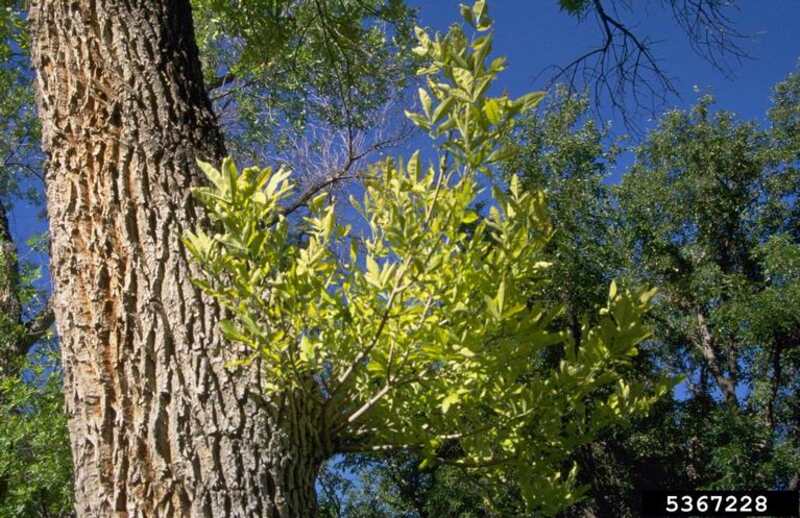
Trees affected: White ash is particularly susceptible to ash yellows, also known as ash decline. Ash yellows is also a common Arizona ash tree problem.
Symptoms: Ash yellows disease affects trees of all ages, and the following symptoms usually occur within three years of infection:
- Leaves may appear smaller, thinner, and lighter green.
- Trees will occasionally grow branches in tufts.
- Infected trees may grow at a much slower rate than non-infected trees, typically reaching about half the height of a healthy tree.
Causes: Ash decline is caused by the phytoplasma Candidatus Phytoplasma fraxinii, a bacteria-like organism. The phytoplasmas live and survive in the food-conducting tissue of the infected plant. There is no definitive cause of ash yellows, but leafhoppers may be the primary means by which the phytoplasmas spread from tree to tree.
Treatment: There is no known cure for this ash tree disease. Remove any infested trees immediately to prevent the spread of phytoplasma to healthy trees. According to the University of Wisconsin-Madison, wood from infected trees can be used as firewood or chipped for mulch.
Risk: Some infected trees may live and grow slowly with ash yellows for many years. Infected trees eventually experience branch dieback, gradually leading to tree death.
3. Verticillium Wilt
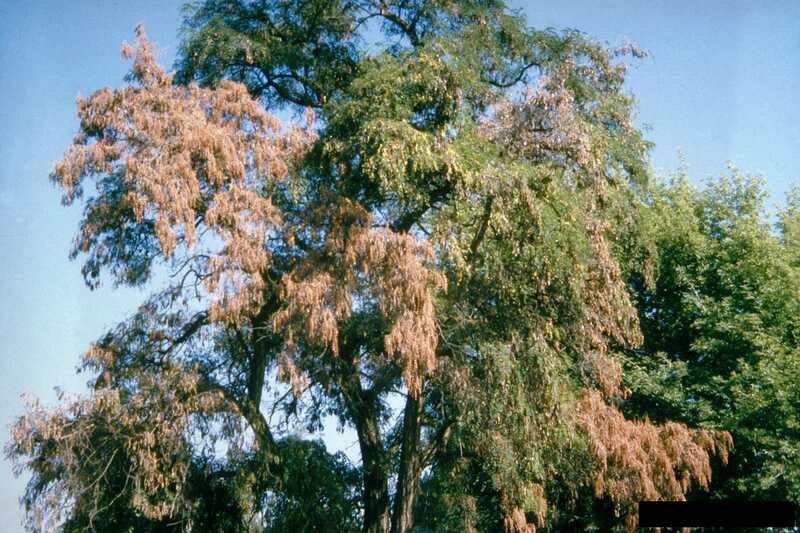
Trees affected: Verticillium wilt is a fungal disease that affects over 300 species of plants.
Symptoms:
- Leaf edges turn yellow, then brown and dry.
- Sudden wilting on one or several branches may occur. It’s often only one side of the tree that wilts.
- The wood underneath the bark of drooping branches often has discolored streaks. You may notice the wood’s discoloration after pruning.
Causes: Trees under stress from drought, nutrients, or salt are more likely to experience Verticillium wilt. The soil-borne fungus Verticillium albo-atrum causes Verticillium wilt.
Infection occurs in the root system, where the fungus produces resting structures that can survive in the soil for many years. The fungi that grow from these structures may penetrate the roots and cause water movement within the tree to suffer.
Season: Symptoms occur in midsummer.
Treatment: Since the fungus can live for a long time underground, it’s best to plant resistant trees in the contaminated soil. To delay the progression of Verticillium wilt, prune affected limbs and provide your tree with adequate water and fertilizer.
Risk: Verticillium wilt may kill your ash tree in a single season. Your ash tree may also survive for many seasons, with each branch slowly dying.
4. Ash Rust
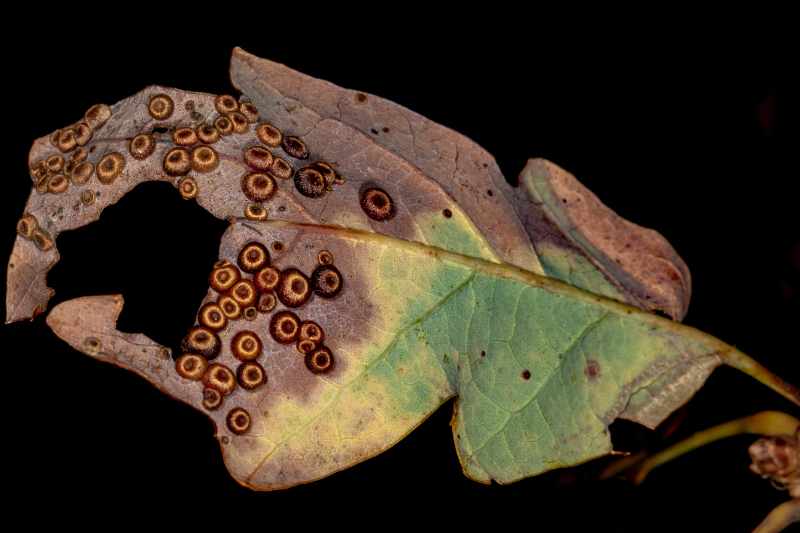
Trees affected: Susceptible ash trees include white, green, and black ash.
Symptoms:
- Small yellow or yellow-orange spots appear on the upper leaf surfaces.
- About 10 days later, bright orange-yellow clusters of spore-producing structures (aecia) develop underneath the leaf.
- Leaves may become distorted.
Twigs and stalks joining the leaf and stem (petioles) may develop wart-like swellings. These swellings will also form the clusters of aecia. Leaf tissue will begin to die, and some trees may appear scorched. Heavily infected trees may experience defoliation.
Cause: The ash rust fungus (Puccinia fraxinata) has five spore stages, two of which occur on an alternate host (marsh and cord grasses). In the spring, teliospores infect the tissues of ash, which then develop spermogonia and aecia. The aecia produce aeciospores, which the wind then blows to either alternate hosts.
Uredinia then form on the new hosts in early summer and produce urediniospores, which repeatedly infect cord and marsh grass. The uredinia will develop into brownish-black telia structures that produce teliospores. These teliospores then infect the ash trees the following spring.
Season: Symptoms may first appear in mid-May.
Treatment: The University of Delaware recommends applying Systhane WSP (myclobutanil) or Immunox. Fungicides may only act as a preventative measure and will not be an effective control method once your ash tree has been infected.
The Cooperative Extension suggests applying the fungicide two or three times around the time leaves start to expand. Then once or twice again at 10-day or two-week intervals.
Risk: Ash rust rarely kills trees.
5. Powdery Mildew
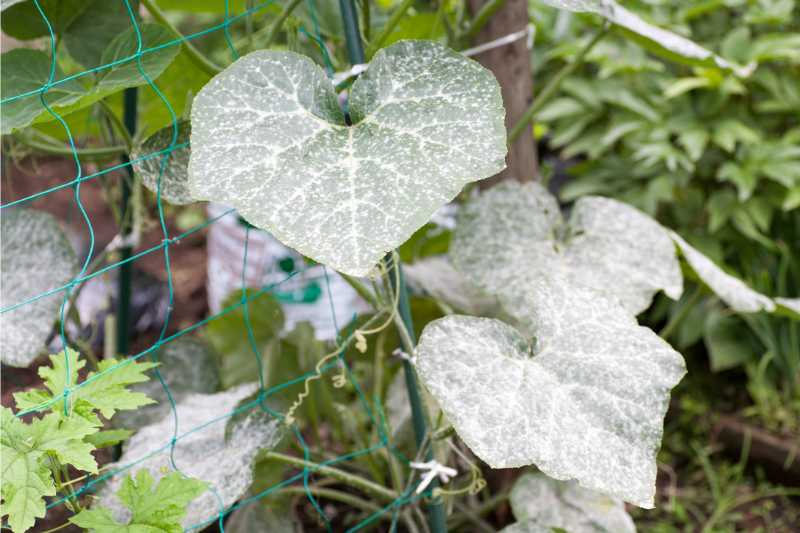
Photo Credit: Miyuki-3 / Canva Pro / License
Trees affected: Powdery mildew can affect many trees. The most common include ash, lilac maple, dogwood, magnolia, basswood, crabapple, catalpa, and oak.
Symptoms:
- The fungi produce microscopic chains of spores that give the infected areas a white powdery appearance (upper and lower leaf surfaces, young stems, shoot tips, blossoms, and flower buds).
- The Infection may cause leaf yellowing, browning, distortion, or premature leaf drop.
Cause: A closely related group of fungi causes powdery mildew. The powdery mildew fungi overwinters inside infected buds. When the buds open in spring, they become covered with powdery spores, which the wind then carries to infect new leaves, fruit, and shoots.
Treatment: Plant susceptible trees in areas with adequate sunlight and good air circulation to reduce moisture. You may prune your plants to ensure air circulation. You can treat powdery mildew with a registered fungicide, which may also help to control the disease.
Risk: Powdery mildew is rarely lethal. Young ash trees growing in heavily shaded areas are the most affected by this disease.
Note: Powdery mildew can also affect your lawn. You can treat powdery mildew on your lawn with lawn fungicides and prevent the condition with cultural practices such as reseeding shady spots, watering properly, and mowing at the proper height.
6. Cotton Root Rot
Trees affected: This fungal disease is also known as Phymatotrichum root rot, Texas root rot, and Ozonium root rot. The disease infects more than 2,000 species of plants and is one of the most challenging fungal diseases to control.
Symptoms:
- Symptoms begin with a slight yellowing or bronzing of the host’s leaves.
- After three days, permanent wilting occurs, followed by death.
- Trees and shrubs succumb to the disease more slowly.
- Affected areas appear as circular patterns of dead plants and can gradually enlarge over time.
Causes: Cotton root rot is caused by the fungus Phymatotrichopsis omnivorum. The fungus invades new areas by slow growth through the soil from plant to plant. The fungus can survive in the soil for many years and as far as 8 feet deep in the ground.
Treatment: Cotton root rot is one of the most difficult plant diseases to control. One solution is to plant a resistant grass crop around the infected area. The resistant crop creates a barrier that limits the spread of the disease.
If cotton root rot is infecting your ash tree, there is a chance of saving the tree if the decay is not yet substantial. Oklahoma State University recommends covering a ridge of soil around the tree’s drip line with a 2-inch layer of organic matter or cow manure. Then, scatter ammonium sulfate and sulfur over the manure.
Flood the basin with enough water to soak the soil to a depth of 3 feet. Keep the soil moist for several weeks after treatment. Your ash tree is likely to recover within the season.
Seasons: Symptoms usually occur from June through September when soil temperatures reach 82 degrees.
Risk Level: This fungal disease can survive in the soil for many years and kill even your biggest ash tree.
7. Mycosphaerella Leaf Spot
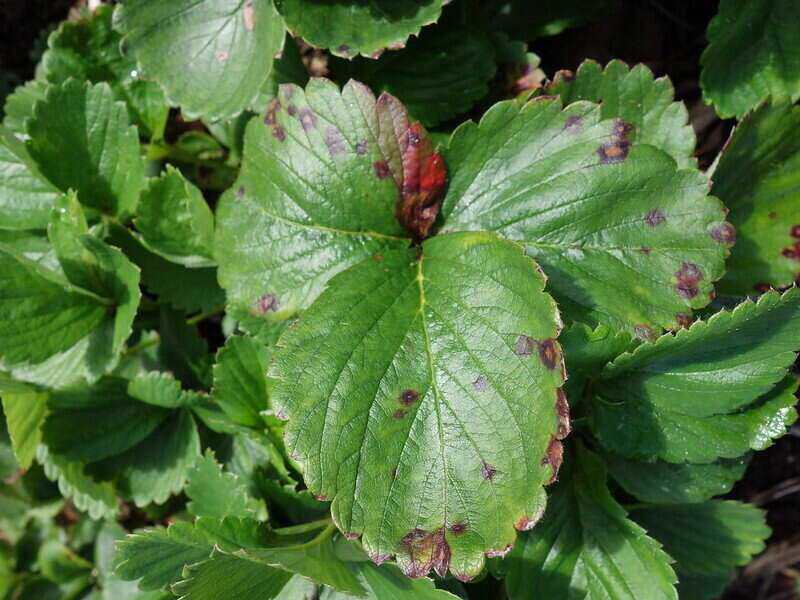
Trees affected: No resistant ash species are known. Species differ in their level of susceptibility.
Symptoms: Two species of Mycosphaerella (M. effigurata and M. fraxinicola) cause Mycosphaerella leaf spot. Both species have distinctive signs, but they may be present at the same time.
- M. fraxinicola forms large, irregular leaf spots (5- to 15-mm) that go from light green to brown with yellow surrounding them.
- M. effigurata forms many small, yellow to brown spots (1- to 3-mm).
- The disease begins on the lowest part of the ash tree and gradually moves up.
- Trees with severe infection may have premature defoliation.
Cause: This disease is triggered by wet conditions. Masses of white spores (conidia) form on the upper leaf surface. In late fall, stromata develop in lesions underneath the leaf and produce spores. Ascospores overwinter in leaf litter and then initiate infection in late spring to early summer.
Treatment: According to the U.S. Department of Agriculture, there are no chemical control measures for controlling this disease. To help prevent Mycosphaerella leaf spot, raking leaf litter may help reduce the overwintering disease. Prune your ash tree properly to promote good airflow, and water your tree regularly to maintain its health.
Risk: This disease will usually not harm your ash tree. However, repeated infection and defoliation may result in poor health.
Ash Tree Pests
1. Emerald Ash Borer
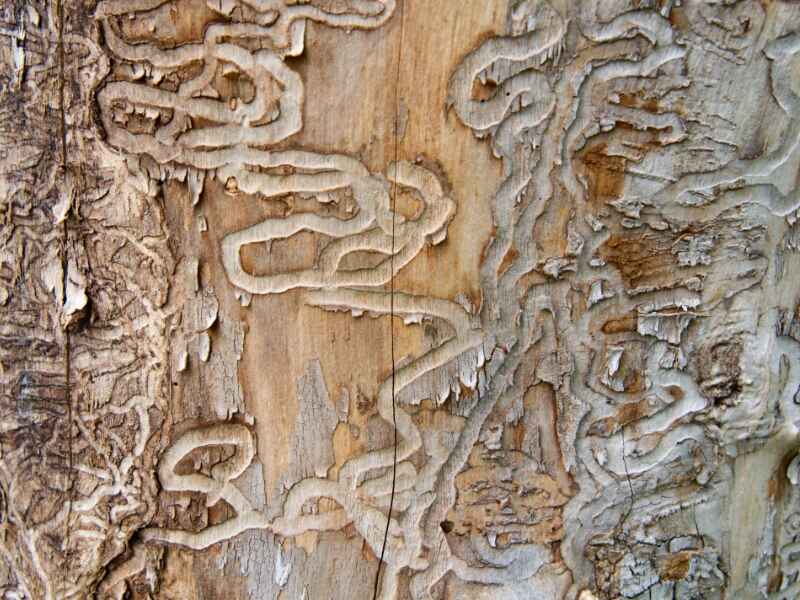
Trees affected: All ash trees are susceptible to emerald ash borer.
Symptoms:
- Damage usually becomes visible 2-5 years after the emerald ash borer (EAB) has infested your tree.
- Cracks in the highest branches are typically the first sign of damage. Canopy dieback usually follows.
- As the larvae make their tunnels, they begin to girdle and kill branches and the trunk.
- Trees may develop new shoots on the trunk called epicormic branching.
Causes: The emerald ash borer is an invasive wood-boring beetle native to Asia. This pest was first found in the U.S. in 2002 near Detroit. The EAB has since spread to several states and has killed millions of ash trees.
Season: The adult beetles start to emerge in May and early June. Beetle activity peaks between mid-June and early July.
Treatment: Infested trees need to be removed and destroyed as soon as possible. If emerald ash borer has infested trees in your county or city, the Virginia Cooperative Extension recommends applying a systemic insecticide as a drench to the base of the tree in May or early June.
Risk: Infested ash trees rarely recover and typically die soon after symptoms appear.
2. Banded Ash Borer
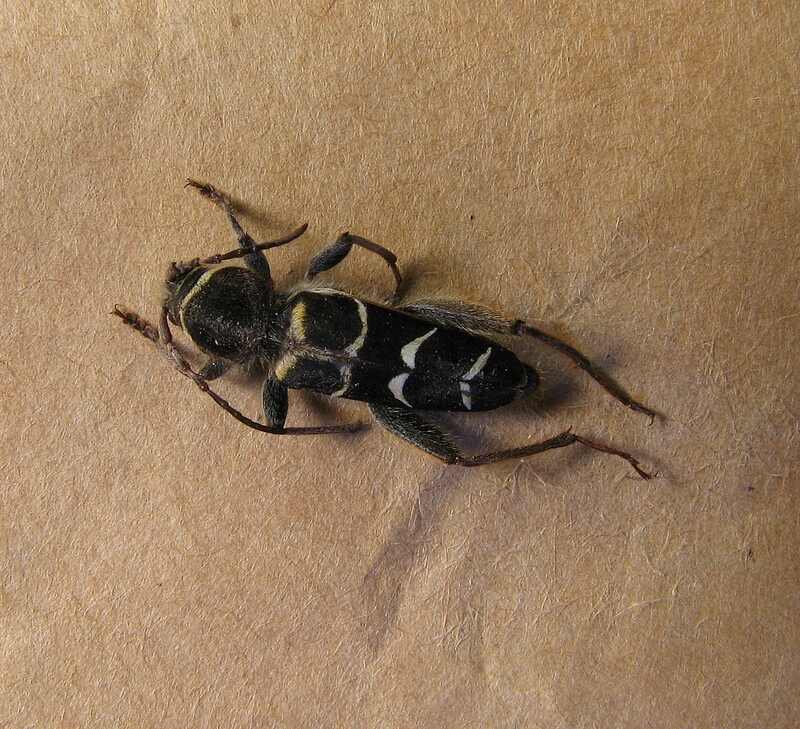
Trees affected: Ash, hickory, elm, mesquite, and white oak are the most common hosts of the banded ash borer.
Symptoms:
- Tunneling larvae of the banded ash borer may weaken a tree’s limbs, making them susceptible to breaking in strong winds.
- Infestation symptoms of the banded ash borer can be confused with the emerald ash borer. The banded ash borer’s tunnels tend to curve and zigzag with no direction, extending deep into the tree. The emerald ash borer, on the other hand, has S-shaped tunnels that are made directly under the bark of the tree.
- The exit holes of the banded ash borer are round, while the emerald ash borer produces D-shaped exit holes.
Causes: Unlike the emerald ash borer, the banded ash borer prefers to attack dead, dying, diseased, or stressed trees rather than healthy trees. In the spring, adults deposit eggs in the crevices of the host tree’s bark.
The larvae feed under the bark before boring into the sapwood, where they feed until the end of summer. In the fall, the larvae pupate and emerge as adults the following spring.
Treatment: Before infestation occurs, the Virginia Cooperative Extension recommends applying the systemic insecticides dinotefuran and imidacloprid as a soil drench. These insecticides may help kill the adult females chewing on the bark to lay their eggs and newly hatched larvae boring into the sapwood.
You may find adult banded ash borers in your home after emerging from firewood brought inside. Instead of treating the firewood with insecticides, leave the firewood outside your house until you want to burn it.
Risk: Because banded ash borers prefer dead or dying trees, your tree may already be at risk due to another disease or stress condition.
3. Ash Flower Gall
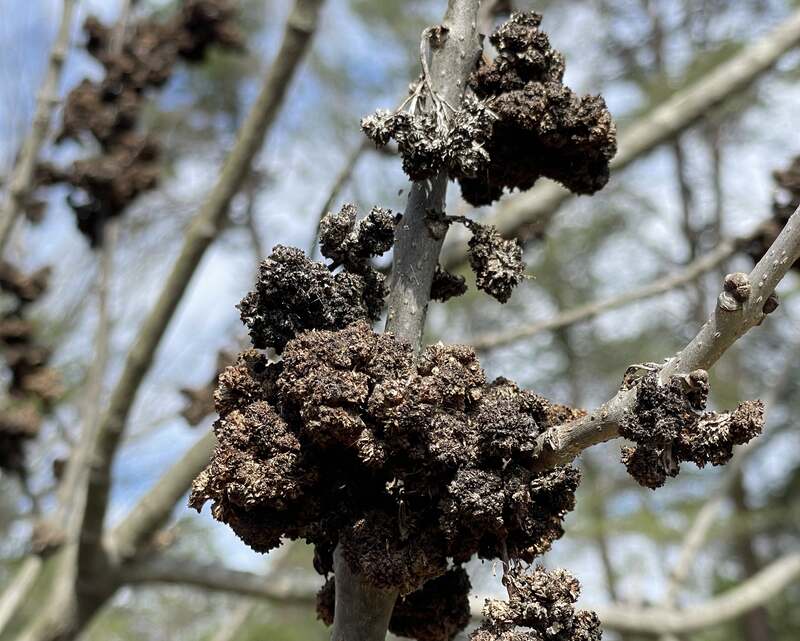
Trees affected: Ash flower gall affects most male ash trees.
Symptoms:
- Male flowers grow round, greenish, one-half to 1-inch diameter tumor-like structures called galls.
- These abnormal plant structures turn dark brown and woody in late summer and may cause leaf distortions.
Cause: An eriophyid mite causes the flowers to form the galls.
Season: These worm-shaped mites, invisible to the naked eye, spend the winter under the buds and begin gall growth in early spring.
Treatment: Once galls start growing on the tree, treatment may be too late. So what can you do? Get rid of the mites before the galls have the chance to grow. The University of Wisconsin-Madison recommends an application of carbaryl (Sevin) in the spring when the first blossoms begin to form to help reduce the number of galls.
Risk: Ash flower gall will not harm your ash tree, but it will affect its appearance. If the weight of the gall tissue is too heavy, the galls may strain the branches.
FAQ About Ash Tree Diseases
What is the Main Cause of Ash Tree Death in North America?
The emerald ash borer (EAB) is the main cause of ash tree death in North America, attacking all 16 ash tree species.
What is the Difference Between Ash Yellows and Emerald Ash Borer?
Ash trees infected with ash yellows can present symptoms similar to those of an emerald ash borer infestation (branch dieback, cankers and vertical cracks near the base of the tree, development of suckers, and clumped sprouts). To differentiate the two, pay attention to these signs:
- D-shaped exit holes and S-shaped galleries under the tree bark are tell-tale signs of the emerald ash borer (EAB). An active infestation can also be indicated, curiously enough, by woodpecker damage. The birds can remove the bark when trying to reach larvae.
- Alterations on the leaves (lighter color, a smaller-than-normal size, and cupped margins) are among the main indicators of ash yellows. Twig growth is also impaired, resulting in the leaves concentrated on shorter lengths of twigs.
The stress caused by the disease may attract other pests, so you may also notice exit holes in the wood. However, the shape and size will be different from EAB’s D-shaped exit holes.
Should I Cut My Ash Tree Down?
If your ash tree has lost more than 30% of its canopy, then it is time to hire a professional to remove the tree safely.
When to Call a Professional
If you suspect your ash tree may have a disease or pest invasion, call a licensed arborist near you. If these diseases aren’t treated or the pests dealt with by you or a pro, your healthy trees could fall victim, too. A professional arborist can help treat your tree with fungicides, perform preventative maintenance, and safely remove an affected tree.
Taking steps when you first see signs of disease or pests could save your prized ash tree.
Main Photo Credit: USDA NRCS South Dakota / Flickr / CC BY-SA 2.0